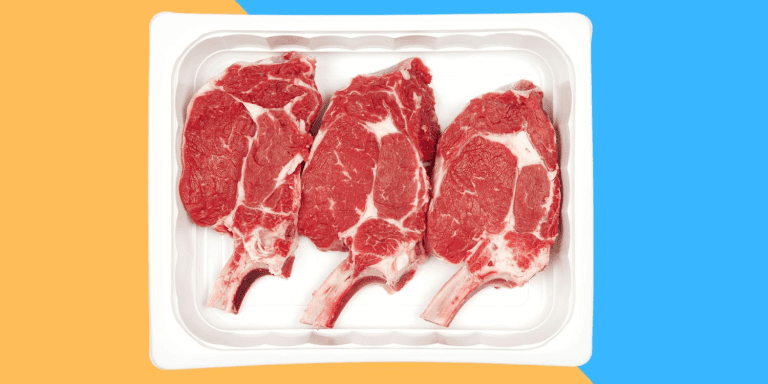Storing raw meat properly in the refrigerator isn’t just a matter of convenience—it’s essential for preserving freshness, preventing foodborne illnesses, and reducing waste. How long meat stays safe depends on the type of meat, its freshness at purchase, and your storage methods. In this guide, we’ll dive into safe storage durations for various meats, factors affecting their longevity, and practical tips to keep your food fresh and safe.
Why Proper Storage of Raw Meat Is Crucial

Ever wondered why meat can spoil quickly even in the fridge? It all comes down to bacterial growth. Harmful bacteria thrive between 40°F (4°C) and 140°F (60°C), known as the “danger zone.” While refrigeration slows bacteria, it doesn’t halt their growth entirely. This is why understanding safe storage times and optimal conditions is so important—not just for safety, but also for retaining the flavor and quality of your meat.
How Long Different Meats Last in the Fridge
Not all meats have the same shelf life. Here’s a quick breakdown of how long you can safely store various types in the refrigerator:
- Beef, Veal, and Lamb: Steaks, chops, and roasts can last 3 to 5 days at or below 40°F (4°C).
- Pork: Like beef, pork cuts such as chops, roasts, and tenderloins stay fresh for 3 to 5 days.
- Poultry: Raw chicken and turkey are more delicate and should be used within 1 to 2 days.
- Ground Meat: Ground beef, pork, or other meats spoil faster due to increased surface area; use within 1 to 2 days.
- Mixed Dishes: Items like meatballs or meatloaf should follow the guidelines for the ingredient with the shortest shelf life—typically 1 to 2 days.
Factors That Impact Raw Meat Longevity
Several factors can influence how long raw meat remains safe and fresh in your fridge:
1. Temperature Consistency
Your fridge should always stay at or below 40°F (4°C). Even brief temperature fluctuations can accelerate spoilage. Invest in a reliable thermometer to monitor this consistently.
2. Freshness at Purchase
The fresher the meat, the longer it will last. Always check the sell-by or use-by dates when shopping, and choose the package with the furthest date.
3. Proper Packaging
Meat stored in its original vacuum-sealed packaging lasts longer. Once opened, wrap it tightly in plastic wrap or store it in airtight containers to prevent air exposure and moisture loss.
4. Storage Placement
Always store raw meat on the bottom shelf of the fridge. This placement keeps it in the coldest area and prevents juices from dripping onto other foods, reducing the risk of cross-contamination.
5. Marinades
Marinating meat can sometimes slow bacterial growth, especially when using acidic ingredients like vinegar or citrus. However, it doesn’t significantly extend shelf life, so follow standard guidelines.
Recognizing Signs of Spoiled Meat

How can you tell if raw meat has gone bad? Trust your senses—here’s what to look for:
- Smell: A sour, ammonia-like odor is a clear sign of spoilage.
- Texture: If the meat feels slimy, sticky, or overly tacky, it’s likely spoiled.
- Color: Discoloration such as green or gray hues indicates bacterial growth. Note that slight browning isn’t always bad—it can occur naturally as meat oxidizes.
When in doubt, throw it out. Consuming spoiled meat can lead to serious foodborne illnesses.
Freezing: A Smart Long-Term Storage Solution
If you’re not planning to use raw meat within its recommended fridge lifespan, freezing is an excellent way to extend its shelf life. Here’s how long different types of meat last in the freezer:
- Ground Meat: Up to 3-4 months.
- Whole Cuts (Beef, Pork, Lamb): 6-12 months.
- Poultry: 9-12 months.
Always label packages with the date of freezing for easy tracking. When it’s time to thaw, stick to one of these safe methods:
- Refrigerator Thawing: The safest option, allowing meat to thaw slowly over 1 to 2 days.
- Cold Water Thawing: Submerge meat in cold water, changing the water every 30 minutes. Cook immediately after thawing.
- Microwave Thawing: Quick but risky; cook immediately to prevent bacteria growth.
Tips for Storing Raw Meat Safely

Keep these tips in mind to maximize freshness and safety:
- Check Expiry Dates: Use or freeze meat before the “use-by” date to avoid spoilage.
- Clean Your Fridge Regularly: Wipe down shelves to prevent the spread of bacteria.
- Separate Raw Meat: Store raw meat away from ready-to-eat items to prevent contamination.
- Monitor Your Fridge Temperature: Keep a thermometer in the fridge to ensure it consistently stays at or below 40°F (4°C).
- Freeze Early: If you’re unsure whether you’ll use the meat within its fridge lifespan, freeze it sooner rather than later.
What Happens If Meat Isn’t Stored Properly?
Improper storage can lead to the rapid growth of harmful bacteria like Salmonella, E. coli, and Listeria. Consuming contaminated meat can cause symptoms ranging from stomach cramps and nausea to severe foodborne illnesses requiring medical attention. The risk is even higher for vulnerable groups like young children, pregnant women, and the elderly.
Conclusion: Fresh Meat, Safe Meals
Storing raw meat properly in the fridge isn’t just a matter of convenience—it’s a simple but critical step toward ensuring food safety, reducing waste, and keeping your meals flavorful. By following recommended storage times, maintaining consistent fridge temperatures, and using proper packaging, you can minimize risks and make the most of your groceries. And remember, when in doubt about freshness, it’s better to be safe than sorry. Keep your fridge organized, stay mindful of best practices, and enjoy delicious meals with confidence!


